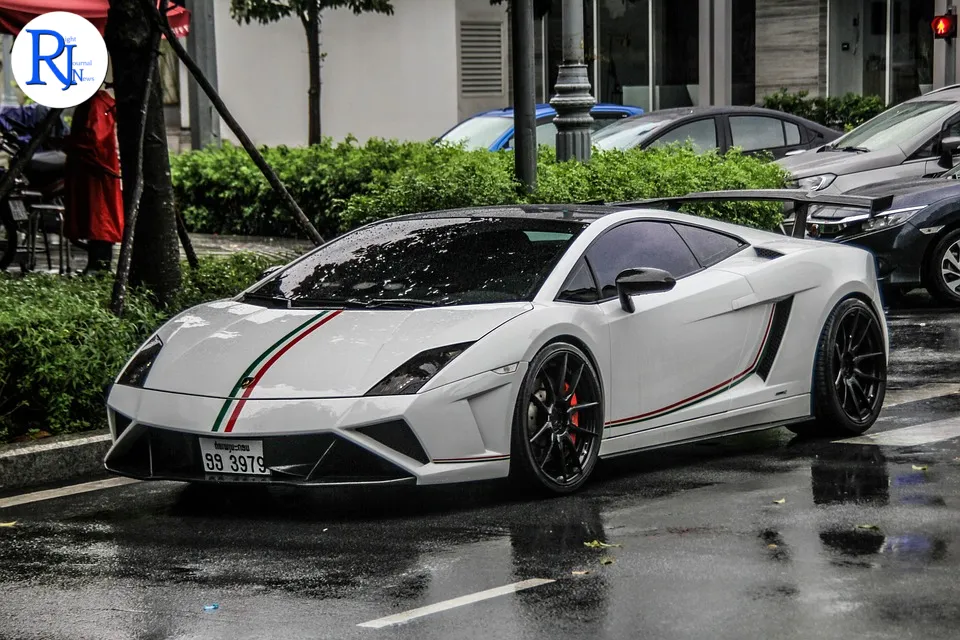Lamborghini will shift its near-term product strategy away from fully electric vehicles and lean into plug?in hybrid performance, after its chief executive said pure EVs are “the wrong offer” for the short to medium term. In comments reported by Auto Express, the Italian supercar maker signalled it will prioritise PHEV technology across its range, arguing it better suits the brand’s customers and the current state of charging infrastructure. The move marks a notable recalibration for a company that has spent recent years preparing for electrification, and it adds to a wider debate inside the performance car world about how, and how fast, to go electric. While Lamborghini has not ruled out future battery?electric models, the emphasis now sits firmly on hybrids that blend combustion engines with electric assistance to deliver range, response and drama.
Context and timing
Auto Express published the interview on 9 October 2025. Lamborghini, based in Sant’Agata Bolognese in northern Italy, has been rolling out plug?in hybrid models since 2023 and framed the latest remarks as a response to market conditions and customer expectations in the near term.

A tactical reset for Sant’Agata’s electrification path
The CEO’s comments suggest Lamborghini sees more immediate value in hybrid systems than in going fully electric. In the interview, he described battery?electric vehicles as “the wrong offer” for the next few years, citing customer needs and the realities of charging. That stance dovetails with the company’s recent product cadence. Lamborghini launched the Revuelto, a V12 plug?in hybrid, in 2023, bringing electric torque and limited electric?only range to its flagship while keeping the high?rev character its buyers expect. In 2024, the brand added a plug?in hybrid version of the Urus SUV, expanding hybrid technology into its highest?volume model.
The firm had previously signalled interest in a future battery?electric model later in the decade, following industry trends and regulatory pressure. It also announced plans to hybridise its whole line?up as part of a broader decarbonisation roadmap. The latest message, however, places emphasis on hybrids as the core solution for the foreseeable future. That approach allows Lamborghini to meet tightening CO2 targets while maintaining the sound, feel and refuelling convenience that define modern supercars.
Why plug?in hybrids suit Lamborghini buyers today
Supercar customers demand performance, drama and usability. Plug?in hybrids can deliver instant electric torque for quick response, while the combustion engine provides range and emotional appeal. For many performance?car owners who drive long distances or track their cars, concerns still exist about charging times, heat management, and weight in pure EVs. By combining a smaller battery with a performance engine, Lamborghini can manage weight and balance while also offering short zero?emission trips in city centres, where restrictions keep tightening.
The CEO’s view reflects that calculus. By calling EVs “the wrong offer” in the short to medium term, he pointed to a gap between what current EV technology and infrastructure provide and what Lamborghini’s customers expect. PHEVs bridge that gap. They also allow the brand to adapt to varied markets: some regions encourage plug?in hybrids with tax breaks, while others focus incentives on pure EVs. In many countries, PHEVs offer company-car tax advantages and reduced urban charges, making them a practical step for owners.
Market signals: mixed momentum for pure EVs in Europe
Global EV demand continues to grow, but at uneven speeds. The International Energy Agency reported that electric car sales passed 14 million in 2023, with EVs making up around 18% of global new car sales. Europe remains one of the strongest regions for EV adoption, yet changes to subsidies and charging rollout have slowed momentum in some markets. Germany, for example, ended a long?running EV subsidy scheme in late 2023, and sales there cooled in the months that followed. These shifts affect high?end brands differently from mass?market players, but they form the backdrop for decisions at niche manufacturers.
In the UK, the zero?emission vehicle mandate began in 2024, requiring rising shares of new car sales to be battery?electric over the next decade. At the same time, the UK delayed the ban on new petrol and diesel car sales from 2030 to 2035. The European Union set a 2035 deadline for near?total phase?out of new internal combustion cars, with a narrow path for vehicles running exclusively on approved e?fuels. These policies compel all carmakers to decarbonise, yet they leave room for different routes until the mid?2030s—especially for low?volume brands.
Regulation and technology: the window for hybrids
Lamborghini’s pivot to PHEVs buys time as battery technology and charging networks improve. Over the next few model cycles, solid?state batteries, faster charging and better energy density could change the game for high?performance EVs. Today, though, large batteries add weight and complexity that can dull the traits supercar buyers prize. Hybrids offer a compromise: meaningful emissions cuts and electric driving in cities, without losing the character of a high?revving engine on the open road.
Compliance matters, too. Fleet CO2 rules in Europe tighten every year, but plug?in hybrids deliver big test?cycle gains when owners charge regularly. For a small manufacturer like Lamborghini, which sells relatively few cars at high prices, those gains can help meet targets while preserving brand identity. The EU’s 2035 rules still loom, however. Unless e?fuels become widely available and recognised at scale, full battery?electric or hydrogen?based solutions will likely play a bigger role later in the decade. For now, Lamborghini’s focus suggests it sees a viable hybrid window that aligns with both regulation and customer demand.
Inside the VW Group ecosystem and the competitive map
Lamborghini sits within the Volkswagen Group, alongside Audi and Porsche—brands that have invested heavily in electrification. Porsche’s Taycan has shown that a premium battery?electric sports saloon can succeed, but translating that formula into a mid?engined supercar remains complex. Lamborghini’s PHEV path mirrors strategies at other performance marques. Ferrari has rolled out plug?in hybrids such as the SF90 Stradale and 296 GTB, and it has said it will add a full EV to its range. McLaren introduced the Artura plug?in hybrid, reflecting similar trade?offs between weight, response and emissions.
Low?volume supercar makers also explore synthetic fuels. The EU’s carve?out for e?fuel?only cars after 2035 keeps a narrow door open for combustion, provided the fuel is carbon?neutral. Development and supply remain limited and costly today. Even so, the option gives brands like Lamborghini more strategic flexibility as they plan beyond the current product cycle.
What buyers and investors should watch next
Lamborghini has already retooled its line?up around hybrid power, starting with the Revuelto and a plug?in Urus. A plug?in successor to the Huracán has also been part of the brand’s stated plan. Buyers should expect incremental gains in electric range and software integration, alongside familiar engine soundtracks and design drama. Charging at home will matter more for PHEV owners who want to realise the full benefits. For investors, the key questions involve regulatory trajectories, battery cost curves and the pace of charging build?out in key luxury markets.
The brand will also need to balance short?term hybrid success with long?term electrification. As battery tech advances and infrastructure expands, the case for a Lamborghini EV could strengthen later in the decade. Until then, the company’s stance emphasises what it can deliver today: high performance, lower emissions and fewer compromises for supercar drivers.
Wrap?up
Lamborghini’s decision to prioritise plug?in hybrids over full EVs in the near term underscores the realities of today’s performance market: customers want drama and convenience, and infrastructure still varies by region. By calling pure EVs “the wrong offer” for now, the CEO set clear expectations for the next phase of the brand’s roadmap. Hybrids allow Lamborghini to cut emissions, satisfy regulators and keep its core identity intact. The strategy aligns with broader industry trends that show continued EV growth but uneven demand in parts of Europe after incentive changes. Over the medium term, advances in batteries and charging could shift the balance back toward full electric models. For now, the brand will double down on PHEVs while it watches policy, technology and customer appetite shape the next era of the supercar.

